I want to go Racing, Help!
The details below are general only. Individual organisers can impose extra conditions to those listed below. CAMS may also change entry requirements and standards. Supplementary regulations are issued for each event with entry forms and contain details of when, where, how much and any extra conditions. If in doubt, contact the event organiser for more details.
Motorkhana (MK):
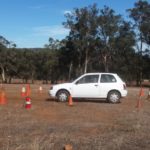 Designed to hone driving skills, MK’s can be run on tarmac or loose surfaces and are set up in open and relatively level areas. MK’s have tight courses called tests that have a set route and direction that must be taken. The whole test is set out using cones or markers as well as the start/finish garages. Usually competitors will be given a map of the course and test layouts are often taken from a MK book. Multiple tests can be run during the day and often more than one test runs at once.
Designed to hone driving skills, MK’s can be run on tarmac or loose surfaces and are set up in open and relatively level areas. MK’s have tight courses called tests that have a set route and direction that must be taken. The whole test is set out using cones or markers as well as the start/finish garages. Usually competitors will be given a map of the course and test layouts are often taken from a MK book. Multiple tests can be run during the day and often more than one test runs at once.
Format
Only one driver can compete on the test at a time and timing is done by stop watches or beam timing. Drivers must start and stop in the correct garage. Knocking over a cone/marker, finishing the test outside the garage or going the wrong way through a test will result in time penalties. The winner of a Motorkhana has the lowest cumulative time for all tests with the least amount of time penalties.
Car Requirements: Car needs to be mechanically sound without major damage and have correctly functioning seats and seat belts. A normal road car is suitable for Motorkhana use. The vehicle does not need to be road licensed.
Driver Requirements: A current CAMS L2NS (or higher) license is required as well as membership in a CAMS affiliated car club. Usually a requirement of neck to wrist to ankle clothing (AKA long shirt and long pants) with covered shoes is required for Motorkhana. Drivers from as young as 12 years old may compete and multiple drivers may use the same car. A civil drivers’ license is not required to compete in Motorkhana.
MK Cost: Average $20-$30 per driver, depending on organiser, event status (ie National Motorkhana Championship) and venue.
Khanacross (KX):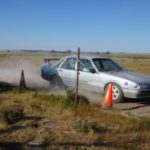
Khanacross is the logical stepping stone from a Motorkhana. You can find out all the info by clicking here
AutoKhana (AK):
Gaining in popularity, AK is the tarmac version of Khanacross. In most circumstances the same requirements apply for AK as for KX.
AK Cost: Average $70 per driver, depending on organiser, event and venue.
Autocross (AX):
If you ever watched Langley or Gloucester Park special stages during Rally Australia (when it was in Perth), you have already seen Autocross.
Basically Autocross is two cars (however can be just one car) racing on a set (loose surface) track against the clock and each other. Autocross is a speed event where the same track is used multiple times during an event. The track is also licensed to comply with CAMS requirements. Competitors have a standing start that is indicated by either flags or lights and a flying finish. Flag marshals (or warning lights) are also used around the track to indicate a problem that may require a competitor to slow down or stop.
Format
An AX track can be up to 3 or so km long and competitors may have 3 or more runs during an event. AX can have classes for vehicles and grades for drivers.The winner of an Autocross has the lowest cumulative time for all runs. Often if an AX has multiple runs, the slowest run is dropped from the final result ie: best 3 of 4. If classes or grades are used in an AX, there are awards for each class/grade.
Car Requirements: Car needs to be mechanically sound without major damage and have correctly functioning seats and seat belts. Car must have a tagged and in date 1kg fire extinguisher (with metal bracket) securely fitted. A normal road car is suitable for Autocross use. To aid with traction, many AX competitors fit Mud/snow or rally tyres. The vehicle does not need to be road licensed.
Driver Requirements: A current CAMS L2S (or higher) license is required as well as membership in a CAMS affiliated car club. A requirement of neck to wrist to ankle clothing (AKA long shirt and long pants) with covered shoes and a compliant helmet is required for Autocross. Multiple drivers may use the same car. A civil drivers’ license is not required to compete in Autocross.
AX Cost: Average $90 per driver, depending on organiser, event and venue.
Hill Climb (HC):
Hill Climbs are fairly self explanatory. If you have watched Targa West at the Zig Zags in Goosberry Hill, you have seen a hill climb. Most hill climbs these days are conducted on twisty, steep tarmac roads. The events often use closed public roads. Like Autocross, HC’s are considered speed events.
Format
Competitors have a standing start that is indicated by either flags or lights and a flying finish. HC can have classes for vehicles and grades for drivers. With a hill climb event, a practice run may be allowed first before competition starts.The winner of a Hill Climb has the lowest cumulative time for all runs. Often if a HC has multiple runs, the slowest run is dropped from the final result ie: best 3 of 4. If classes or grades are used in an HC, there are awards for each class/grade.
Car Requirements: Car needs to be mechanically sound without major damage and have correctly functioning seats and seat belts. Car must have a tagged and in date 1kg fire extinguisher (with metal bracket) securely fitted. An oil catch can of suitable size must also be fitted as well as a 150mm blue triangle indicating battery position. A normal road car is suitable for HC use.
The vehicle may need to be road licensed. Whilst the actual competition area is on a closed road, it may be required to transport along public roads back to the start area at the base of the hill.
Driver Requirements: A current CAMS L2S (or higher) license is required as well as membership in a CAMS affiliated car club. A requirement of neck to wrist to ankle clothing (AKA long shirt and long pants) with covered shoes and a compliant helmet is required for HC. Multiple drivers may use the same car. A civil drivers’ license is not required to compete in a HC, however will be required if transport on public roads is needed to return to the starting area.
HC Cost: Average $80 per driver, depending on organiser, event and venue.
Tarmac Sprint (TS):
Tarmac sprints are somewhat like a sealed surface version of an autocross. Basically a TS is one car racing against the clock on the track, however multiple cars can be on the track at the same time. Unlike circuit racing, cars are not permitted to overtake another car and do not start at the same time. Tarmac Sprints are speed events where the same track is used multiple times during an event. The track is also licensed to comply with CAMS requirements.
Format
Competitors have a standing start that is indicated by either flags or lights and a flying finish. Flag marshals (or warning lights) are also used around the track to indicate a problem that may require a competitor to slow down or stop. A TS track can be up to 3 or so km long and competitors may have 3 or more runs during an event. TS can have classes for vehicles and grades for drivers.
The winner of a Tarmac Sprint has the lowest cumulative time for all runs. Often if a TS has multiple runs, the slowest run is dropped from the final result ie: best 3 of 4. If classes or grades are used in a TS, there are awards for each class/grade.
Car Requirements: Car needs to be mechanically sound without major damage and have correctly functioning seats and seat belts. Car must have a tagged and in date 1kg fire extinguisher (with metal bracket) securely fitted. An oil catch can of suitable size must also be fitted as well as a 150mm blue triangle indicating battery position. A normal road car is suitable for TS use.
Driver Requirements: A current CAMS L2S (or higher) license is required as well as membership in a CAMS affiliated car club. A requirement of neck to wrist to ankle clothing (AKA long shirt and long pants) with covered shoes and a compliant helmet is required for TS. Multiple drivers may use the same car. A civil drivers’ license is not required to compete in a TS.
TS Cost: Average $100 per driver, depending on organiser, event and venue.
Stage 1 Rally Sprint (RS):
Stage 1 Rally Sprints are where things get a bit more serious.
Unlike every other form of motorsport listed so far, Rally Sprints require both a driver and co-driver (navigator) in the car during competition. The course may comprise up to two separate lengths of road, each being no longer than 8km. Each length of road, comprising a stage, may be traversed in both directions, making a maximum of four sections. Each section may be attempted a maximum of three times (ie, three runs on each section). Stage 1 sprints also have a route design requirement to limit maximum speeds.
Format
Stage 1 sprints can only be run at venues with a Rally Sprint venue license, however can be conducted on sealed, loose surface or a combination of both. Rally Sprints can be run day or night. All competitors must know about rally procedures such as: time cards, rally signs, controls and stopping in stage. This is explained at the drivers briefing for those competitors that do not hold a Rally License. Route charts are provided to competitors, stage markers are installed and pace noting may be allowed.
Car Requirements: Production cars only. Car needs to be mechanically sound without major damage and have correctly functioning seats and seat belts. Car must have a tagged and in date 1kg fire extinguisher (with metal bracket) securely fitted. A 150mm blue triangle indicating battery position must be fitted, as well as mud flaps on all driven wheels (for loose surface events). Competing cars must also carry 2 x safety triangles. A normal road car is suitable for a Stage 1 Rally Sprint use.
Driver & Co-Driver Requirements: Current CAMS L2S (or higher) licenses are required as well as memberships in a CAMS affiliated car club. A requirement of neck to wrist to ankle clothing (AKA long shirt and long pants) with covered shoes and compliant helmets is required for Rally Sprints. Multiple drivers may use the same car. A civil drivers’ license is not required to compete in a Rally Sprint when the event is on private property and does not use open public roads for any section or transport.
Stage 1 RS Cost: Average $200 per entry, depending on organiser, event and venue.
Stage 2 Rally Sprint:
Stage 2 Rally Sprints are effectively a mini rally and run similar to stage 1 events without the speed  restriction. There are also different vehicle and license requirements.
restriction. There are also different vehicle and license requirements.
Format
Stage 2 Rally Sprints have many of the aspects of a full rally. They can be run on private property, closed public roads or both. Surfaces can be tarmac, dirt or a combination and can be run day or night. All competitors must know how a rally operates. Route charts are provided to competitors, stage markers are installed and pace noting may be allowed.
Car Requirements: Effectively a full competition rally car with CAMS log book must be used. The car must have a CAMS approved roll cage and harnesses. All necessary rally equipment must be fitted such as triangles, first aid kit etc.
Driver & Co-Driver Requirements: Current CAMS Clubman Rally (or higher) licenses are required as well as memberships in a CAMS affiliated car club. A requirement of neck to wrist to ankle clothing or race suits with covered shoes and compliant helmets are required for Rally Sprints. Multiple drivers may use the same car. A civil drivers’ license is not required to compete in a Rally Sprint when the event is on private property and does not use open public roads for any section or transport.
Stage 2 RS Cost: Average $200 per entry, depending on organiser, event and venue.
Multi Club Rally (Clubman Cup):
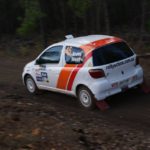 This is the first level of full rally competition. The event is broken into stages and will comprise competitive sections (special stages) and transport sections (liaison). They can be run on private property, closed public roads or both. Generally competitors drive on public roads between sections of the rally. There is no limit to the number or distance of special stages.
This is the first level of full rally competition. The event is broken into stages and will comprise competitive sections (special stages) and transport sections (liaison). They can be run on private property, closed public roads or both. Generally competitors drive on public roads between sections of the rally. There is no limit to the number or distance of special stages.
Format
Surfaces can be tarmac, dirt, snow or a combination of all. Events can be run day and night. All competitors must know how a rally operates including time controls. Route charts are provided to competitors and stage markers are installed. In the WA Clubman Cup, pace noting is not permitted and the minimum competitive distance is 50km.
Car Requirements: In WA only 2WD vehicles are eligible for the Clubman Cup. A full competition rally car with CAMS log book must be used. The car must have a CAMS approved roll cage, race harnesses and must comply with all technical and safety requirements. All necessary rally equipment must be fitted such as mud flaps, triangles, first aid kit etc.
Driver & Co-Driver Requirements: Current CAMS Clubman Rally (or higher) licenses are required as well as memberships in a CAMS affiliated car club. A requirement of neck to wrist to ankle fire retardant clothing or race suits with covered shoes and compliant helmets are required. A civil drivers’ license is needed by at least the driver. *check current regulations as apparel and safety standards do change.
Multi Club Rally Cost: Average $400+ per car, depending on organiser, event and location.
State Championship Rally
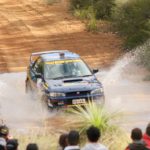 Run in a similar format to multi club rallies, the same rules and formats apply. There is no limit to the number or distance of special stages. Surfaces can be tarmac, dirt, snow or a combination of all. Events can be run day and night and over multiple days. All competitors must know how a rally operates including time controls. Route charts are provided to competitors and stage markers are installed. Pace noting is permitted and the minimum competitive distance is 100km.
Run in a similar format to multi club rallies, the same rules and formats apply. There is no limit to the number or distance of special stages. Surfaces can be tarmac, dirt, snow or a combination of all. Events can be run day and night and over multiple days. All competitors must know how a rally operates including time controls. Route charts are provided to competitors and stage markers are installed. Pace noting is permitted and the minimum competitive distance is 100km.
Car Requirements: Competing vehicles are divided into classes based on engine size and transmission (2WD or 4WD). A full competition rally car with CAMS log book must be used. The car must have a CAMS approved roll cage, 5 or 6 point race harnesses and must comply with all technical and safety regulations. All necessary rally equipment must be fitted such as mud flaps, triangles, first aid kit etc. 4WD turbo charged cars must also have a compliant restrictor fitted too.
Driver & Co-Driver Requirements: Current CAMS Clubman Rally (or higher) licenses as well as memberships in a CAMS affiliated car club. Compliant helmets, race suits and frontal head restraints (Hans/Hybrid) are also required. A current civil drivers’ license is needed by at least the driver. *check current regulations as apparel and safety standards do change.
State Championship Rally Cost: Average $700+ per car, depending on organiser, event and location.
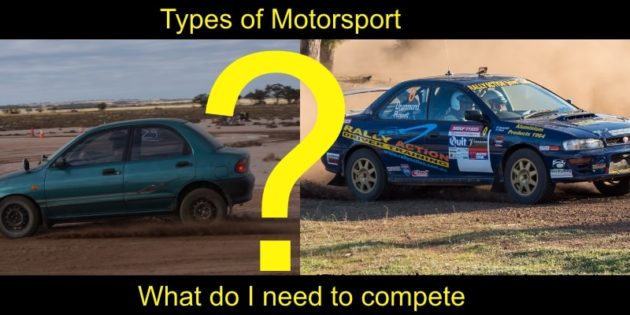
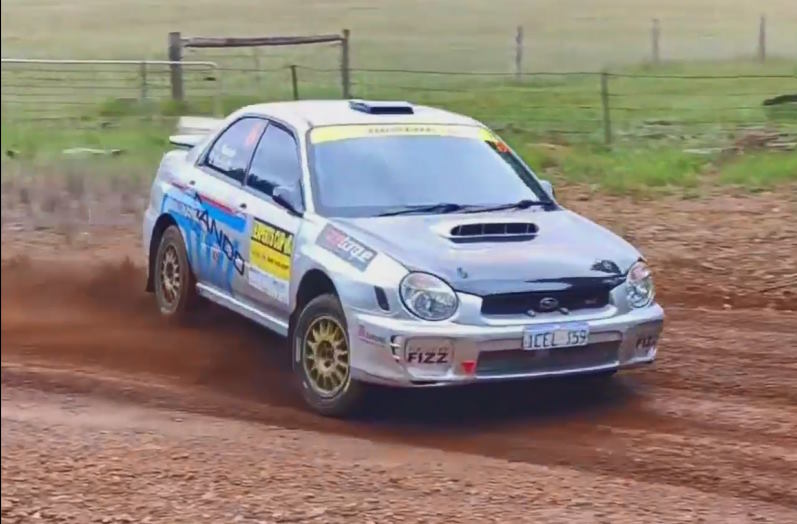



Leave A Response